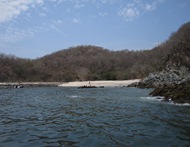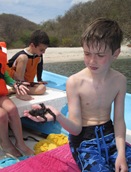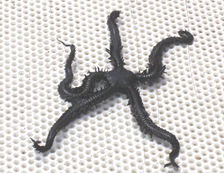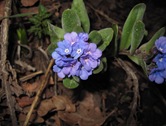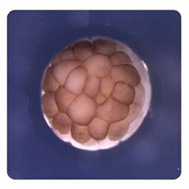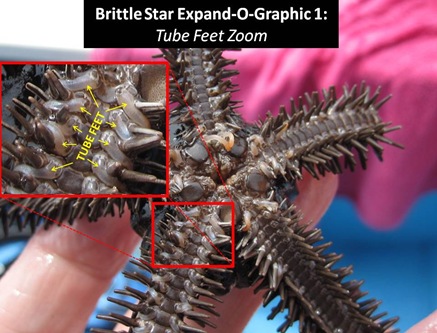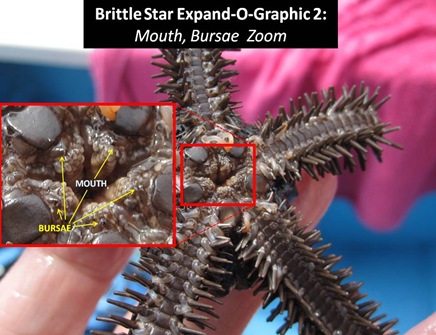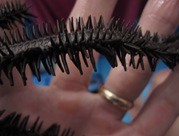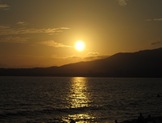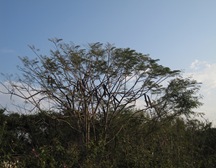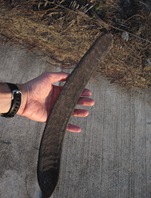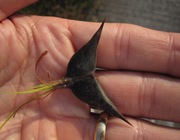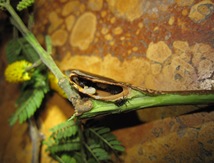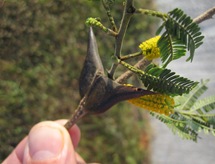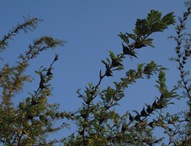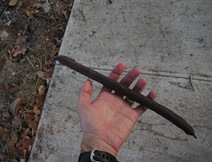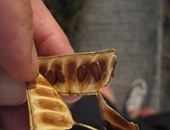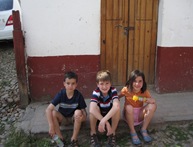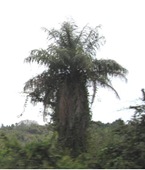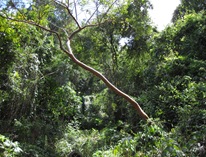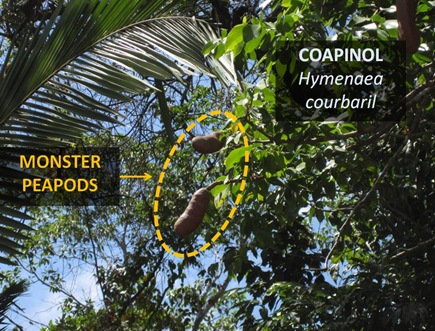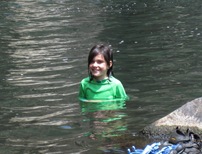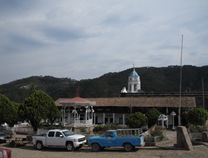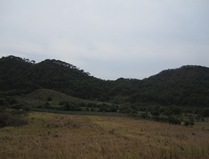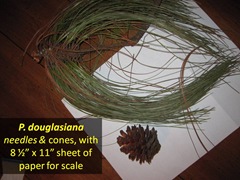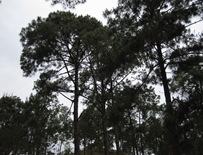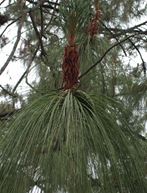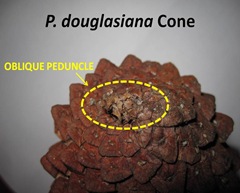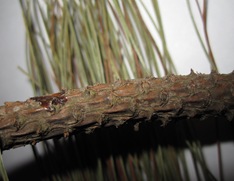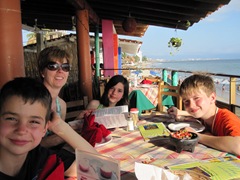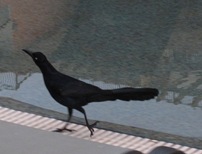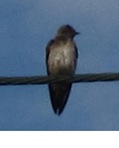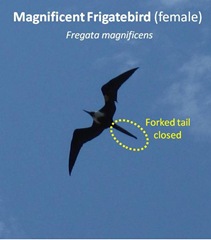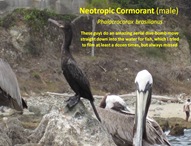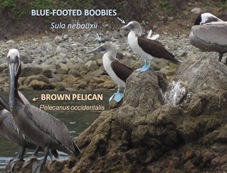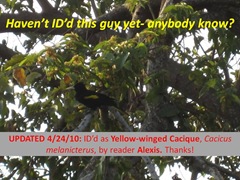I only have a few strict rules about work to which I hold myself, but one of them is this: If I am ever offered the opportunity to travel to Las Vegas for work, I take it. I absolutely love Vegas.
On the face of it, this may seem odd. I never gamble. I don’t even like lotteries. I don’t like giant hotels, or strip/sprawl development, or buffets, or Vegas-style shows, or has-been music/comedy stars*.
*Ever wonder what happened to “Carrot Top”? He’s in Vegas, on about 50+ billboards all over town.
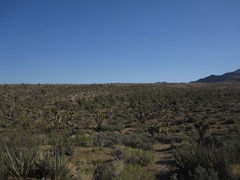 But I love the Mojave desert. And Vegas is smack-dab in the middle of, and has wonderfully easy access to, the Mojave. And it’s just a day’s drive away from Salt Lake, and in between the two are St. George and Little Creek and Gooseberry and the Virgin, Pine Valley and Mormon ranges and endless Joshua tree forests and about a zillion other cool places and things I’ve blogged about. So anytime I get invited to Vegas, I load up the car with bike/hike/camping gear and make a boondoggle out of it.
But I love the Mojave desert. And Vegas is smack-dab in the middle of, and has wonderfully easy access to, the Mojave. And it’s just a day’s drive away from Salt Lake, and in between the two are St. George and Little Creek and Gooseberry and the Virgin, Pine Valley and Mormon ranges and endless Joshua tree forests and about a zillion other cool places and things I’ve blogged about. So anytime I get invited to Vegas, I load up the car with bike/hike/camping gear and make a boondoggle out of it.
I have 2 tangents here. One is light-hearted and cheerful, the other pissed-off and angry. I can’t decide between the 2, so I’m doing both.
Happy Tangent: There’s a weird-but-cool thing that makes Vegas a great outdoorhead destination: Very Few Outdoorheads. Seriously, you get 30 minutes outside of Vegas, and there’s like hardly anyone hiking/biking. It’ll be 75 degrees, flowers blooming, great trails, no one around, and I think that the reason for this is that Vegas by and large, does not attract outdoor-oriented residents*.
*I know. Shocking. How do I come up with these insights?
Think of Boulder, Colorado. The place is mobbed with outdoorheads. Any official/legal trail within 10 miles of Boulder is packed on a weekend.  Outdoorheads are attracted to the wonderful setting, climate, lifestyle and recreational opportunities offered by the Boulder area, and the Colorado Front Range in general, creating a spillover effect such that everyplace from the JeffCo open space parks to Fruita and Moab is packed with Front Range outdoorheads. But Vegas isn’t an outdoor Mecca. You never hear of people moving to Vegas for access to nature and the outdoor lifestyle. As a result, the backcountry around Vegas is often wonderfully and pleasantly “under-populated.” While not exactly empty, it seems to have visitation loads of a metro area maybe 1/10th the size. You know what? If I had to leave Salt Lake, Vegas would be near the top of my list.
Outdoorheads are attracted to the wonderful setting, climate, lifestyle and recreational opportunities offered by the Boulder area, and the Colorado Front Range in general, creating a spillover effect such that everyplace from the JeffCo open space parks to Fruita and Moab is packed with Front Range outdoorheads. But Vegas isn’t an outdoor Mecca. You never hear of people moving to Vegas for access to nature and the outdoor lifestyle. As a result, the backcountry around Vegas is often wonderfully and pleasantly “under-populated.” While not exactly empty, it seems to have visitation loads of a metro area maybe 1/10th the size. You know what? If I had to leave Salt Lake, Vegas would be near the top of my list.
Angry Tangent: I’m not anti-gambling- I just have no interest in it. I get that millions of people enjoy it, even though I don’t understand why, thereby placing it in the same category for me as golf and reality TV shows.
I am however, very much anti-lottery. Not because of the gambling aspect, but in that it represents a fundamental breakdown of democracy.  I’m serious. Societies- all societies- work by pooling resources for common benefit. In any society people have arguments about what resources should be pooled and what common benefit should be distributed to whom. Today in our society this manifests itself in everything from defense spending to healthcare reform, but no one except the most extreme whackos disagrees that there should be some common benefit- even it’s just police, defense or prisons- funded by some pooling of resources- be it property, income (progressive or flat), sales, VAT or head taxes, or just user fees.
I’m serious. Societies- all societies- work by pooling resources for common benefit. In any society people have arguments about what resources should be pooled and what common benefit should be distributed to whom. Today in our society this manifests itself in everything from defense spending to healthcare reform, but no one except the most extreme whackos disagrees that there should be some common benefit- even it’s just police, defense or prisons- funded by some pooling of resources- be it property, income (progressive or flat), sales, VAT or head taxes, or just user fees.
In a democratic society, the citizens agree that these tough decisions are determined by the voters, or, more often, their elected representatives. And so we have all sorts of political/election struggles to determine who gets what services, who will pay for those services and how.
But a lottery represents the failure of a democracy to determine that mix of revenues and services. A lottery says, “Hey, raising money (i.e. taxes) is too hard. Let’s sell raffle tickets, and hope some people buy them.” And buy them they do. Overwhelmingly, the people who buy the bulk of them are the poor, the uneducated, the desperate, the addicted, or sometimes, just the plain dumb. Lotteries are a perversion of the American Dream- a parasitic feeding upon the weakest, least capable segments of society by a self-interested, self-entitled, lazy electorate.
Nested Tangent: Particularly insidious is when lotteries are promoted specifically for things like schools, or parks. “Oh!” we say, “We need lotteries to help pay for schools!” Give me a break. Think schools are important? Then pay some damn taxes for them. No one holds lotteries to build aircraft carriers.
Oo- good tangents! I feel much better. Hey, speaking of parasitism, that’s one of the themes of today’s post.
The Vegas boondoggle sounded like a little bit better idea before our Mexican vacation; Sunday night when we returned home, the idea of jumping in the car Monday AM sounded a little less appealing. But I’d packed before leaving for Mexico*, and once I was rolling down I-15, it seemed like a good idea again.
*Although I am generally a disorganized slob in most aspects of my life, when it comes to road trip preparation I am the model of planning, efficiency and foresight.
Until I reached Parowan, and the weather changed. Here’s what the view out the windshield looked like just South of Cedar City.
Down, down I drove through the rain, past Toquerville, Leeds and Washington. But a mile or two before St. George, I passed out of the rain, and the roads and trails were dry as a bone. I made pit-stop to ride my old favorite, Barrel Roll, and then another pit stop to make a quick run up & down Bearclaw Poppy trail (which I included a clip of in this post.) A couple of hours later I checked into the weirdness of a Las Vegas mega-hotel, where I worked away till the wee hours on my presentation for the next day.
I wrapped up my work duties the next day by early afternoon, excused myself and headed out toward Blue Diamond. Blue Diamond is a weird-but-charming little hamlet, with a single general store, only about 25 miles from Las Vegas. It sits in a small vale alongside a creek, surrounded by desert hills sprinkled with Joshua Trees, Creosote and Yucca, and consists mainly of modest homes shaded by tall Cottonwoods. It’s historically been home to workers at the nearby gypsum mine, although in recent years a few upscale homes have been built by newcomers around the periphery. Still, the town feels like a modest, unassuming little oasis in the desert, worlds away from the sprawl and lights of the nearby Strip.
Side Note: Unfortunately, the sprawl is working its way closer. When I first started visiting the area in the late 90’s, development ended about a mile or two West of I-15 along US160. Today the development continues for about 10 miles West. The Red Rock conservation area provides a bit of a buffer, but you definitely get the feeling that the wave of sprawl is rolling towards Blue Diamond.
Blue Diamond is the Northern hub of a network of single-track linking into Cottonwood Valley to the South. I parked just outside of town and started working my way counterclockwise around the hills to the South of Blue Diamond. I didn’t have a map, but sort of hunted and pecked my way over to the South side of the hills, where I came across a local rider- let’s call him Fast Fred*. Fast Fred took me for a guided tour of one of his favorite regular loops, of which you can see a quick segment here, rolling through and around Joshua Trees and other Yuccas on fast singletrack.
*Because he smoked my ass on the descent. You know how it is. You run into a local rider and he offers to guide you for a bit, and you wonder if you’ll be able to hang with him. On the climb it was no problem; I kept right up and cleaned everything. “Oh hey,” I thought, “no problem.” Then we started descending and he left me behind like a one-eyed nun driving a Volkswagen bus up Parley’s.
After our lap together, Fast Fred gave me some route recommendations for the ride back to town, sending me up and over the hills on a rocky, technical, slow-but-fun, winding ascent. Up top the lightly-traveled trail rolled along the ridges. Here’s a quick clip:
Apologies for in the in & out of shadow/contrast thing, but I included this clip because I wanted to show something: Yucca. At first glance, there are some taller, branching yuccas that look like Joshua Trees. But when you look more closely, you can see that they’re not. The leaves are too long, and there’s never more than one branch, and they don’t get nearly as tall. They’re a different species of tree-ish Yucca, Spanish Dagger, or Yucca schidegera.
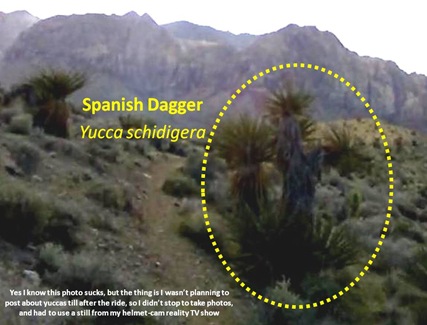 There are some 40 species of Yucca, all native to the New World, mostly to Mexico and the Southwestern US. There’s some debate as to whether some/all yuccas are technically succulent, but like Cacti, they use CAM photosynthesis to thrive in hot, arid climates. But they evolved their CAM-ability completely independently, and the 2 aren’t closely-related. Cacti are dicots, and so more closely related to everything from oaks to roses. Yuccas are monocots, and so more closely-related to things like grasses and palms.
There are some 40 species of Yucca, all native to the New World, mostly to Mexico and the Southwestern US. There’s some debate as to whether some/all yuccas are technically succulent, but like Cacti, they use CAM photosynthesis to thrive in hot, arid climates. But they evolved their CAM-ability completely independently, and the 2 aren’t closely-related. Cacti are dicots, and so more closely related to everything from oaks to roses. Yuccas are monocots, and so more closely-related to things like grasses and palms.
Spanish Dagger fascinates me because it seems an in-between. It’s evolved its way up off the ground, and started to branch. But it’s not that tall, and it never seems to branch more than once. It sort of seems to be following the same evolutionary path, though not yet as far along, as the Joshua Tree. But that’s not the Cool Thing I want to blog about. In fact I have 3 Cool Things I want to blog about, and they all have to do with the relationships between Yuccas and Yucca Moths.
All About Yucca Moths
Two years ago, back during Monocot Week (Man was that a great week or what?), I blogged about the most impressive yucca, the Joshua Tree, Yucca brevifolia. In that post I mentioned the cool mutualistic relationship between the Joshua tree, and its one pollinator, the Yucca Moth, Tegeticula synthetica. It’s a cool story, in that the Yucca Moth doesn’t just pollinate the flower by accident, but actually makes an apparently deliberate detour to deposit a laboriously-accumulated ball of pollen on the stigma. The tree in turn provides shelter and food to the moth larvae, who consume a modest portion of the plant’s fruit.
But Joshua trees aren’t the only yuccas pollinated by Yucca Moths; all yuccas are. And as I’ve learned more about Yuccas and Yucca Moths, it turns out that their story is even more fascinating and multidimensional than I originally thought. To explain the story, and how totally cool it is, I need to share some info about Yucca Moths. It’s a bit geeky, but stick with it because it winds up somewhere really cool.
Until the late 1990’s, there were believed to be just 3 species of Yucca Moth, all within the genus Tegeticula*. The first was/is T. synthetica, which pollinates Joshua Trees (and nothing else.) The second was/is T. maculata, which pollinates Chaparral Yucca (Y. shipplei). And the third was T. yuccasella, which pollinated all kinds of different yucca species. T. yuccasella seemed to have different forms, or races, that specialized in different species of yucca.
*Just to complicate things, there’s another genus of Yucca Moths, Parategeticula, but I’m leaving those alone for this post.
In the late 1990’s, researchers determined that what had previously been considered T. yuccasella was in fact 13 different species, all descended from a common ancestor species that lived 2 or 3 million years ago. And a number of these species pollinate just a single yucca species. Spanish Dagger for instance, is pollinated by a single species, T. mojavella, which in turn lays its eggs in the flowers of Spanish Dagger, and no other yucca. This in turn leads to a number of interesting things, including Three Really Cool Things. Here’s a quick example of an Interesting Thing, before we get to the First Really Cool Thing:
 In the clip above, you also see a number of other yuccas that are stuck firmly on the ground, with no “trunk” to speak of. Many of these are Banana Yucca, Yucca baccata, which is pollinated by its own Yucca Moth, T. baccatella (pic right, not mine). Now sometimes, Spanish Dagger and Banana Yucca (also called Spanish Bayonet- cool name, eh?) hybridize. How is that possible?
In the clip above, you also see a number of other yuccas that are stuck firmly on the ground, with no “trunk” to speak of. Many of these are Banana Yucca, Yucca baccata, which is pollinated by its own Yucca Moth, T. baccatella (pic right, not mine). Now sometimes, Spanish Dagger and Banana Yucca (also called Spanish Bayonet- cool name, eh?) hybridize. How is that possible?
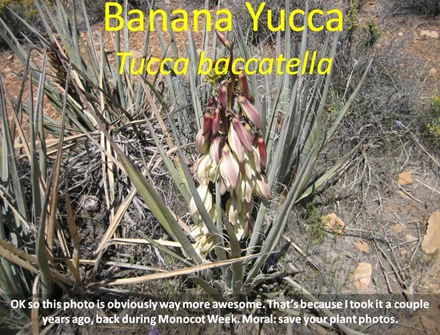 T. mojavella (the Spanish Dagger pollinator) has never ever been found in a Banana Yucca flower. But every once in a blue moon, a T. baccatella will be found in a Spanish Dagger Flower, enabling the transfer of pollen between the 2 species.
T. mojavella (the Spanish Dagger pollinator) has never ever been found in a Banana Yucca flower. But every once in a blue moon, a T. baccatella will be found in a Spanish Dagger Flower, enabling the transfer of pollen between the 2 species.
Tangent: This may sound trivial, but it’s actually pretty cool. For whatever reason, some tiny proportion of Banana Yucca Moths have started visiting Spanish Dagger flowers. Now let’s say that the BY Moths that did so experienced slightly greater reproduction as a result. There could be more and more of these “promiscuous” moths, which could promote widespread hybridization between the two yuccas, and eventually drive both species- which are largely sympatric*- to genotypic extinction.
*Same range.
I’m not saying that’s what’s happening here, but the fact that such crossover does occasionally occur give you a glimpse of a range of possibilities, and makes you wonder how often events like this change the course of species evolution.
First Cool Thing
OK, let’s get to the cool stuff. The First Really Cool Thing is this: Of the 13 “new” species, 2 are cheaters. That is, they lay their eggs in/on yucca fruit, but they don’t pollinate the flowers. They’re closely-related to, and descended from, Yucca Moths that do pollinate the flowers, but at some point in the last couple million years, their ancestors just said, “ah, screw it…”* and started blowing off the little pollination side trip.
*I’m not suggesting they consciously decided to quit pollinating. Rather at some point a genetic change occurred which caused a Yucca Moth not to pollinate a flower, and the moth reproduced successfully and passed that new tendency to its descendants.
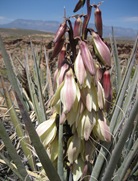 When you think about the dynamics at work here, it makes your head spin. From the cheater-species standpoint, the shift to cheating is a winner; less work, but still reap all the benefits. And in fact DNA analysis appears to show that cheating in the 2 cheater species evolved independently, meaning that cheating has evolved multiple times. But there’s a catch. The cheaters are absolutely reliant upon the non-cheaters to propagate the species; without non-cheaters, the host yuccas would die out*. So what balance exists- and how is it maintained- between cheaters and non-cheaters? Why would any one species not cheat? Isn’t it mind-boggling?
When you think about the dynamics at work here, it makes your head spin. From the cheater-species standpoint, the shift to cheating is a winner; less work, but still reap all the benefits. And in fact DNA analysis appears to show that cheating in the 2 cheater species evolved independently, meaning that cheating has evolved multiple times. But there’s a catch. The cheaters are absolutely reliant upon the non-cheaters to propagate the species; without non-cheaters, the host yuccas would die out*. So what balance exists- and how is it maintained- between cheaters and non-cheaters? Why would any one species not cheat? Isn’t it mind-boggling?
*Although this would take quite some time- maybe centuries or longer- as yuccas also reproduce asexually by root-cloning.
Side Note: Cheating also happens in Fig Wasps, BTW.
Second Cool Thing
 And this leads us to the Second Really Cool Thing. Yuccas sometimes host other insects beside moths and their larvae, including aphids, and ants. The Soaptree Yucca, Y. eleta, often hosts populations of Wood Ants, one of a number of species belonging to the genus Formica. Soaptree Yuccas are often parasitized by the Cheater Yucca Moth T. corruptrix (pic right, not mine). But Soaptree Yuccas which house/host Wood Ants suffer far lower rates of T. corruptrix parasitism than those without Wood Ants. And yet the presence of Wood Ants doesn’t negatively impact the presence of Soaptree Yucca’s “legitimate”, non-cheating species of Yucca Moth, T. elatella! How can this be?
And this leads us to the Second Really Cool Thing. Yuccas sometimes host other insects beside moths and their larvae, including aphids, and ants. The Soaptree Yucca, Y. eleta, often hosts populations of Wood Ants, one of a number of species belonging to the genus Formica. Soaptree Yuccas are often parasitized by the Cheater Yucca Moth T. corruptrix (pic right, not mine). But Soaptree Yuccas which house/host Wood Ants suffer far lower rates of T. corruptrix parasitism than those without Wood Ants. And yet the presence of Wood Ants doesn’t negatively impact the presence of Soaptree Yucca’s “legitimate”, non-cheating species of Yucca Moth, T. elatella! How can this be?
Extra Detail: “How it can be” isn’t 100% clear, but a likely reason is that non-cheater moths lay eggs in flowers, while cheaters often just lay directly in (already fertilized) fruit. The Wood Ants tend to hang out more in fruit than they do in the flowers.
So the Wood Ant and the Soaptree Yucca are exhibiting another, indirect, layer of mutualism beyond the Moth-Yucca mutualism. The complexity of relationships going in these spiky shrubs is really amazing.
Third Cool Thing
But, as I so often do in these endless run-on posts, I have saved the best for last, which brings us to the Third and Final Really Cool Thing: Sometimes, the yuccas cheat.
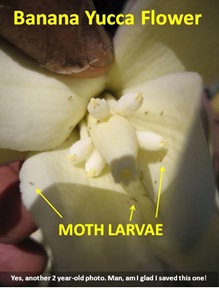 Back to our old friend, Banana Yucca. The Yucca Moth benefits from the relationship by laying eggs in the flowers, which develop into larvae that feed on the ovules. The ovules are the larva’s only food source. But some number of Banana Yuccas sprout flowers with large numbers of non-viable ovules, in which the larvae are unable to locate the (relatively few) viable ovules, and starve. In fact, 70% of individual Banana Yucca plants appear to cheat in this way; they receive the pollination benefits of the relationship, but they don’t feed the larvae. That means that only 30% of the plants are producing the pollinators needed by the other 70%!
Back to our old friend, Banana Yucca. The Yucca Moth benefits from the relationship by laying eggs in the flowers, which develop into larvae that feed on the ovules. The ovules are the larva’s only food source. But some number of Banana Yuccas sprout flowers with large numbers of non-viable ovules, in which the larvae are unable to locate the (relatively few) viable ovules, and starve. In fact, 70% of individual Banana Yucca plants appear to cheat in this way; they receive the pollination benefits of the relationship, but they don’t feed the larvae. That means that only 30% of the plants are producing the pollinators needed by the other 70%!
The same boggling dynamics are at work here as are at play with the cheater moths, but reversed; the Cheater Plants can’t survive without Non-Cheater Plants to propagate the pollinators, but for any given plant, the better deal is to cheat. So, again, what balance exists- and how is it maintained- between cheaters and non-cheaters? And again- isn’t it mind-boggling?
I didn’t know this until later, after I’d gotten curious and researched a bit more about yuccas and moths. On my long run back down into Blue Diamond, I rather thought more about how darn sharp yuccas are, as I repeatedly scratched legs and arms on those encroaching upon the narrow trails. There’s a long-standing maybe-urban myth about a mtn biker some years back around Moab who fell on a yucca, sliced open his jugular and bled to death. The tale in mind, I was a bit more cautious than usual on the gravelly descent.
Back at the car I loaded up, washed up, and drove off in the waning light, North into the desert.
Note about Sources: Big thanks to my friend and fellow nature-blogger KB for help in corralling several of the sources for this post. The information about cheater moths and their relationships to non-cheater species came largely from this paper. The info about indirect mutualism between Wood Ants and Soaptree Yucca came from this paper. And my source for the cheating Banana Yucca was this paper.
